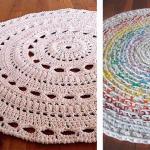Epithelial cells in urine during pregnancy. Flat epithelium in urine in pregnant women
The urinary system experiences significant pressure during pregnancy, so before or after an appointment with a doctor, a woman should have her urine analyzed in order to promptly detect the onset of pathology. If squamous epithelium in urine during pregnancy is found higher normal indicators, then the situation may indicate the beginning of the inflammatory process and a more thorough diagnosis will be required.
The importance of epithelium in urine during pregnancy
Epithelium in urine during pregnancy means that some of the cells that line the mucous membrane of the genitourinary tract are exfoliated. During the passage of urine through all parts of the excretory system, it comes into contact with the mucous membrane, which has a protective function and slightly moves away under the influence of biological fluid. Therefore, during analysis, specialists can detect a small number of cells.There are several types of cells, so the location of inflammation and infection can be determined by type. Flat epithelium in urine during pregnancy, it becomes a basis to assume that the infection is in the urethra or vagina, transitional - indicates the development of harmful bacteria between the kidneys and urethra (in the ureter or bladder), which leads to desquamation of tubular (kidney) cells.
During diagnosis and deciphering the analysis, specialists pay attention to additional symptoms. So, if there is pain when urinating, and tests reveal increased epithelium, then treatment will depend on what type of cells was detected.
Epithelium in urine is normal in pregnant women
The norm of epithelial cells in pregnant women should be no more than 4-5 per area in the field of view. When interpreting the analysis, the type of sediment detected during examination under a microscope is often indicated. If there are a lot of cells and it is difficult to count during the study, then the table of the study form will take this into account and indicate multiple desquamation.If the squamous epithelium in the urine of pregnant women is slightly increased, then this is most often a variant of the norm. Because at the stage intrauterine development hormonal levels change, and as a result of the growth of the child and the enlargement of the uterine cavity, pressure on the internal organs of the urinary system increases. In addition, the rules for collecting urine may be violated, so an additional study is always prescribed to exclude erroneous results.
A significant excess of the indicators becomes the main parameter by which damage by harmful bacteria is determined, and discomfort always occurs when urinating or pain in the lumbar region during the formation of pyelonephritis.
Causes of increased levels of epithelium in urine
In pregnant women, a high rate of the presence of epithelial cells in urine sediment becomes a sign of the following diseases:- Cystitis is accompanied by frequent urge and burning sensation when urinating. An infection in the urethra or bladder, causes multiple detachments;
- nephropathy is characterized by the appearance of sediment in urine along with blood cells. Foci of inflammation occur, and the kidneys gradually lose their ability to filter blood plasma;
- pyelonephritis is caused by an infectious process in the kidneys;
- manifestations late toxicosis, threatens the formation of gestosis.
If there are no symptomatic manifestations of the disease, then doctors may suspect incorrect collection of the test material. In this case, a repeat analysis is prescribed, taking into account the correctness of the biological fluid collection.
Early diagnosis using clinical urine analysis and additional examinations will allow timely detection of infection and prevent further spread of harmful bacteria that are dangerous for normal intrauterine development.
It is within normal limits and appears as separate cells. It can only increase during inflammation of the urethra or organs of the reproductive system.
But even during pregnancy, conditions can be created for its increased secretion. The level of its content can only be determined by general analysis biological fluid.
What is epithelium?
Epithelium is the covering tissue skin, mucous membranes, organs of the reproductive and urinary systems.
Moving through the channel, urine is constantly in contact with cells on the surface of the tissue. Almost always they flake off and are excreted along with urine, later being detected using a microscope.
Urine tests confirmed that this element is always present. The only difference can be different types of cells and their numbers.
The epithelium does not represent anything serious; it can only be used to determine pathological abnormalities that occur in the body.
Implications for clinical diagnosis
When carrying a baby, a woman’s body experiences increasing stress, hormonal changes, and certain conditions under which water and salt exchanges take place. The functional capabilities of the paired organ and the ureteral system are maximally activated.
The uterus begins to increase in size, and pressure on the internal organs increases. As a result of this, cells flat look exfoliate much more intensively, metabolism takes place more intensively in order to maintain the vitality of tissues.
During gestation, the norm of the epithelium at all stages continues to remain unchanged. The presence of three to five cells in the field of view is considered acceptable.
Types of epithelium that can be found in urine during pregnancy
It is customary to distinguish three groups of tissues identified in urine sediment using a microscope - flat, renal, transitional. Having determined the type of cell in the urine, we can make an assumption about the most likely inflammatory diseases in a particular area. Such diseases most often include.
Flat
Pregnant women contain the largest number of cells in the field of view. They are more quickly detached from the cover of the ureteral canals, since the release of urine in the first and last stages becomes more frequent. Due to this process, the cells are intensively peeled, and the content of squamous epithelium in the biological fluid increases.
The reason for the deviation from the normal indicator is considered to be an enlargement of the uterus, which puts pressure on the ureteric canals and changes the location of the paired organ. But it should be remembered that there should be no significant changes during pregnancy.

Significant deviations can be detected during inflammatory processes, which should be eliminated immediately, since the infectious process can spread quite quickly and affect all other organs of the system. Having discovered abnormalities in the urine analysis of a pregnant woman and beginning to suspect inflammation, the specialist is obliged to prescribe an in-depth examination in order to then create a therapeutic course.
Renal
Its second name is tubular, as it is the covering of the canals of a paired organ. In a healthy organism, such epithelium is not detected in the urine. U infants The norm is considered to be one to ten cells in the field of view.

The presence of renal epithelium in people of any age category and during pregnancy confirms the fact of infection of the ureteral system. This norm in pregnant women must be monitored, which is why women have to be constantly examined, checking for the presence of epithelium once every two weeks.
Transition
Treatment
If in the urine analysis the epithelial cells exceeded normal level, the treatment course must be aimed at eliminating the causes that caused a reaction of this nature. An experienced doctor should carry out the diagnosis and formulate a course of therapy.
Self-treatment is prohibited because it may cause negative impact on the body of the expectant mother and the developing fetus.
If nephropathy is detected, the woman is recommended to be hospitalized in order to organize constant medical monitoring of her kidneys. In this case, an appointment is scheduled medicines that cannot harm the child. Should be taken at the same time.
Treatment is carried out until it becomes clear that future births will take place without complications. If there are no changes towards improvement, it is necessary to resolve the issue of the method of delivery.
If cystitis or inflammation of the urethra is diagnosed, antibiotics must be taken during treatment for the best effect. In this case, medications are selected that can have a direct effect on the urea. Often, when a woman has cystitis, she undergoes a procedure that involves administering antibiotics by catheter, which will go directly into the inflamed area.

When candidiasis develops, local medications are first prescribed - suppositories, creams, vaginal tablets. The therapeutic course may include restorative and immunomodulatory agents. In this case, it is recommended that therapy be prescribed to a man to eliminate the possibility of recurrent lesions.
Finding epithelial cells in urine during pregnancy is not in itself a cause for concern. However increased amount structures or the presence of renal particles may indicate the presence of diseases of the urinary system. During pregnancy, blood flow to the uterus increases, hormonal levels change, and therefore the risk of developing pathologies of nearby organs increases.
Types
There are 3 types of epithelial cells that can be found in urine:
- Flat. In women, they line the mucous membranes of the external genitalia and the urethra.
- Transitional. Mostly cover the bladder tissue, as well as a small area of the urethra.
- Renal. Line the surface of the tubules.
Depending on the type of epithelium and in the presence of other abnormalities, the doctor can draw conclusions about the location of the disease.
Norm
The norm of epithelium in urine during pregnancy is lower, because During pregnancy, the risk of developing diseases of the genitourinary system increases. Among women general indicator should not exceed 6 units in the field of view.
When deciphering, it is important to take into account the type of epithelium, because the permissible norm depends on it:
- Flat-shaped cells. The norm is 0-5 units in the field of view. Found in large quantities, because are regularly renewed due to mechanical action and enter urine from the surface of the external genital organs. Pregnant women often have borderline concentrations due to frequent urination.
- Transitional cells. The norm is no more than 1 unit in the field of view. Occasionally they enter the urine from a small area of the urethra. A single detection has no diagnostic value, but the regular presence of several structures may indicate the presence of pathology.
- Kidney cells. Normally they are not detected. Their presence always indicates kidney damage.
In the presence of specific symptoms and complaints, identifying borderline values may be the basis for making a diagnosis.
Reasons for deviations
The detection of a significant amount of epithelium during examination is most often associated with the following diseases:
- Urethritis. It is an inflammatory process occurring in the urethra. Most often it occurs as a result of bacterial infection, but it can appear against the background of the formation of stones in the urinary system. Accompanied by pain, itching and burning. Unpleasant sensations worse during urination. With urethritis, an increased concentration of squamous cells occurs.
- Cystitis. This is an inflammation of the bladder that can be caused by bacteria, viruses, fungi, chemicals, undesirable reaction immune system etc. Most often it is infectious in nature. Accompanied by pain when urinating, frequent urge, incontinence and other symptoms. When the bladder is inflamed, many flat-shaped and transitional cells are found in the urine.
- Pyelonephritis. This is a kidney disease that most often develops as a result of the spread of bacteria during cystitis or urethritis. With inflammation, patients experience pain in the lumbar region, heat(up to +40°C), migraine, vomiting, nausea, etc. The urine may turn brown. This indicates deep tissue damage. With pyelonephritis, renal epithelial cells are found in urine.
- Kidney stone disease. Characterized by the formation of stones. When the disease occurs, patients develop a fever, pain, and sediment is found in the urine. Sometimes partial or complete obstruction occurs. As stones move and pass through the urinary tract, they damage the mucous membranes of the entire system. Epithelium of all types is detected in urine.
- Other infections and diseases affecting the genitourinary system. These include STDs, tuberculosis, etc.
Detection large quantity squamous epithelium may be due to poor hygiene. If procedures are performed too often, the mucous membranes of the external genitalia become dry. As a result, the cells are exfoliated more actively. The situation gets worse when using detergents. If procedures are performed rarely, the epithelium accumulates on the surface of the genital organs. A large number of structures enter the urine.




When making a diagnosis, other data obtained during research should be taken into account. It is necessary to conduct an ultrasound, bacteriological culture and Nechiporenko test. When assessing a woman’s condition, the concentration of leukocytes, red blood cells, protein, the presence of mucus, crystals, bacteria, etc. is important.
What to do if you have elevated
With an increased concentration of squamous epithelium, a retest is prescribed, because sample contamination is suspected. If the same indicator is obtained again or the presence of other cells, additional studies are carried out. Depending on the results, the doctor makes a diagnosis and selects the optimal treatment regimen, taking into account the expected benefits for the mother and risks for the fetus.
At infectious diseases urinary system, the course of therapy includes antibiotics, antiviral or antifungal agents. The type of drug depends on the strain of the pathogen and its resistance. Homeopathic medicines can be used to restore tissue, improve fluid circulation and speed up the elimination of pathogens and waste products. For pain, antispasmodics are prescribed. If severe bleeding occurs, hemostatic agents can be used, but their use is undesirable.
For kidney stones, the treatment regimen depends on the type of stones, their size and the condition of the patient. To alleviate the condition, homeopathic remedies and antispasmodics can be used.
To prevent relapses and the formation of new stones, a special diet is prescribed.
In advanced cases (with the development of necrosis, peritonitis, etc.), surgical intervention can be performed. Such methods are used only if there is a threat to the health and life of the mother.
With absence pathological reasons By increasing the concentration of epithelium, its level is normalized some time after birth. This occurs after the damaged tissue is restored. If, with borderline or slightly elevated values of squamous cells, a woman does not experience specific symptoms, the indicators can be considered a variant of the norm.
The squamous epithelium in the urine is increased - this formulation is not uncommon in test results. Any deviation from the norm, either more or less, can be a cause for concern, especially if such indicators are observed in the tests of a child or a pregnant woman.
This article will talk about what the appearance of flat epithelial cells in urine tests means, where they come from, and what analysis can be used to determine their increased content.
By epithelium we mean a single layer of cells lining the mucous membranes of the genitourinary system. Epithelial cells are the main components of almost all glands that are present in the human body. Flat epithelium is one of its types; in addition, there is transitional and renal epithelium.
Passing through the kidneys, urine comes into contact with the epithelium, as a result of which cells can exfoliate and be detected by microscopy of urine sediment. Normally, squamous epithelium can be found in single quantities in the urine of a child or adult.
However, in the test results in men there is practically no flat epithelium, since it enters the urine only from the lower third of the urethra. Thus, single epithelial cells do not have a very important diagnostic value, but are taken into account in the overall picture of research results.
If there is increased squamous epithelium in the urine of a child or adult, this may indicate the development of an inflammatory process.
Reasons for changes in normal indicators may be:
- A lot of squamous epithelium in the urine is observed with cystitis. This disease is characterized by and can be caused by viruses, bacteria or fungi. Urine with cystitis is duller and cloudier, which is caused by the presence of mucus, blood, epithelial cells and bacteria.
- Increased squamous epithelium in the urine occurs with nephropathy. This pathology occurs against the background of impaired metabolism, and leads to disruption of the functioning and structure of the kidneys, and may also be accompanied by crystalluria. Squamous epithelium in the urine of a child with this pathology can occur after poisoning or heavy physical exertion; may occur in children with neuro-arthritic diathesis; in those who suffered hypoxia during childbirth; in children with deficiency of vitamins D, E, A, B6, as well as calcium and magnesium, Crohn's disease; diabetes mellitus; colitis and enteritis; in children with impaired metabolism of oxalic acid salts. In addition, squamous epithelium in the urine can appear during pregnancy. This is all due to nephropathy in pregnant women, which develops due to the failure of adaptation mechanisms in a woman’s body. Another hypothesis states that nephropathy in pregnant women occurs due to a hormonal imbalance or due to an immunological conflict between the organisms of the mother and child. With nephropathy in pregnant women, edema appears, blood pressure rises, protein is found in the urine, and the urine becomes cloudy, hyaline and granular casts are found, and squamous epithelium is found in the urine of pregnant women. Drug nephropathy caused by taking analgesics, antibiotics, anti-inflammatory drugs, vaccines and serums also occurs. Similarly, it is accompanied by an increased content of squamous epithelium in urine.
- There is an increase in squamous epithelial cells in the urine of men with prostatitis. Inflammation of the prostate is accompanied by various changes in the composition of urine: its transparency and acidity changes, protein, hemoglobin, bilirubin, salts, and leukocytes can be detected. However, detection of squamous epithelial cells and red blood cells is not a specific finding.
- Urethritis of various etiologies– pathology, which is accompanied by inflammation of the walls of the urethra, can be provoked by various pathogens: gonococci, chlamydia, trichomonas, Candida fungi. Urethritis can also be allergic, toxic or radiation, or occur after trauma to the urethra. During urine examination, bacteria, leukocytes, protein, large amounts of mucus and squamous epithelium, and sometimes red blood cells are detected. Squamous epithelial cells in urine during pregnancy may appear when. In women carrying a child, urethritis can occur as a result of pressure on the bladder, or be caused by pathogens that were not active in the “pre-pregnancy” period.
Note! If squamous epithelium is detected in a child’s urine, the norm is no more than 1-3 units in the field of view. If this amount increases, you should immediately consult a doctor. In the case when squamous epithelial cells cover the entire field of view, a hereditary pathology is probably implied.
Rules for passing the analysis and its decoding
After the patient comes with certain complaints, the doctor must conduct an external examination procedure, as well as prescribe necessary tests. In this case, a urine test will be the most informative. During the analysis process, the laboratory assistant not only determines the number of squamous epithelial cells, but also classifies their types.
A single squamous epithelium can be considered a normal variant (1-3 in the field of view), but a large number of it indicates various inflammatory processes in the organs of the genitourinary system. It is based on the amount of epithelium in the tests that a specialist can make a preliminary diagnosis.
In addition, it is extremely important that the instructions are followed when collecting biomaterial for research.
The patient should adhere to the following rules:
- The day before urine collection, limit the consumption of foods that tend to change the color of urine (beets, blueberries, carrots, foods with a high content of food dyes), and also stop taking vitamins and drugs from the nitrofuran group, diuretics.
- Limit stress and physical activity, as they can negatively affect the test result.
- Before collecting urine, do not forget about genital hygiene (wash with soap and warm water).
- Collect biomaterial after waking up. Release the first and final portions of urine into the toilet to avoid bacteria from the genitals.
- Collect urine in a sterile disposable container, close it, and deliver it to the laboratory within 1-2 hours. Under no circumstances should you put a container with biomaterial in the refrigerator for long-term storage! The price of the container is quite low; there is no need to use glass jars for testing.
- Urine collection during menstruation in women, as well as after cystoscopy, should be postponed.
Examining sediment microscopy can also reveal the presence of:
- leukocytes;
- red blood cells;
- cylinders;
- mucus;
- salts;
- bacteria;
- epithelium.
Normally, most of these indicators should not be detected or visualized in single quantities in the field of view. The appearance of leukocytes, bacteria, mucus, casts and other indicators in most cases indicates the development of an infectious-inflammatory process in the urinary system.

From the photos and videos in this article, we learned about the factors that cause squamous epithelium to appear in the urine, and also learned about recommendations for preparing for the test.
Frequently asked questions to the doctor
Normal or deviation

Hello. We recently had our child’s urine analyzed, and they deciphered all the indicators for us, except microscopy of the sediment. Tell me, if bacteria, leukocytes, and squamous epithelium are found in the urine, what is the norm for children?
Good afternoon. Normally, a child’s urine contains up to 6 leukocytes per field of view, a single epithelium and a complete absence of bacteria. Mucus and casts should also be absent. In young children, up to 7 red blood cells can be detected in the field of view.
During pregnancy (gestation), hormonal changes and metabolism occur in a woman’s body. If there is a slight appearance of infection within the urinary system, it will spread at a faster rate.
During pregnancy, squamous epithelium in the urineshould be detected at low levels during laboratory tests. If this happens, the body has started inflammatory disease kidney Given its infectious nature, there is a risk of the pathogen penetrating the placental barrier.
Therefore, during gestation, laboratory tests of biological fluids are carried out every month. Timely treatment of the disease will reduce the risk of complications that lead to impaired fetal development or worseningwomen's health.
What is epithelium, how does it get into the urine during pregnancy?
Epithelium is the surface of tissue. In the urinary system it is represented by three types: transitional, flat, renal. Each of them has its own epithelial norms , the excess of which means a certain disease.
As a result of urine passing through tract cells are always exfoliated into it. Their insignificantdetection by doctorsdoesn't mean appearance pathology.
Flat epithelium is located in the urethra, urinary bubble , prostate gland. Transitional - lines the bladder, ureters, prostate ducts, renal pelvis. Renal - concentrated only inside the organ.
During inflammation, a large number of epithelial cells begin to be shed into the urine, which is detected during testing.

To identify the disease and check the progress of treatment, every pregnant woman undergoes urine tests. The epithelium is revealed by a general clinical urine test (CUR), the Nechiporenko test, and a three-glass study.
Indications for analysis
OAM is always performed during gestation. But for other studies it is necessary to have indications:
- elevated values for OAM;
- appearance pain during pregnancyin the lower back, back, stomach;
- signs of an infectious process inside the urinary tract (itching, burning, pain during urination);
- the appearance of blood with excretory fluid;
- visible changes in urine (foam, mucus, turbidity, change urine color).
Important! Ignoring signs of inflammation of the urinary system is a threat to the development and life of the child.
Collection rules for analysis
There are rules according to which a woman must collect urine. If they are violated, this will lead to changes in the parameters of the biological fluid. The attending physician will prescribe therapy that the woman does not need.
- A week before testing, a diet is used that will reduce the load on the gastrointestinal tract, liver and kidneys. You should not eat fatty, fried, spicy, salty foods.
- Before urine test during pregnancystop all medications. If they are necessary to maintain gestation, the doctor gives permission to continue using the drug.
- Active physical activity is contraindicated for pregnant women. If they are used in a mild form, they are temporarily stopped a few days before the study and continued after it with the doctor's permission.
- Testing is done in the morning. You should not eat or drink before this. As soon as the woman wakes up, she needs to urinate inside a sterile container. If you take the test in a regular jar, the result will show the presence of bacteria and foreign substances.
- A woman's vagina contains many microorganisms, so they can be passed into urine during urination. To prevent this from happening, the vaginal opening is covered with a sterile tampon. Only after this the bladder is emptied.
- After collecting the sample, it is tightly closed with a lid so that the liquid does not leak out and foreign substances do not get inside.
- Storage of biomaterial is possible only inside the refrigerator for no more than 2 hours. After this time, the sample must be delivered to the laboratory technician. This is necessary to study the material before enzymatic reactions occur in it and falls out. urinary sediment.
Interpretation of epithelium test results
On the analysis form, the laboratory assistant signs the determined amount of epithelium different types. The patient must take it to the attending physician for decoding. U healthy people there is a small number of elements of flat and transitional epithelium. The kidney should not be detected; it is concentrated inside the organ tissue.
Norm of epithelium content in urine during pregnancy
For each type epithelial element has its own norms. The doctor needs them to understand in which area of the urinary tract the disorder is occurring.
Flat
Squamous epithelium forms in most of the urinary tract. Therefore, it is always released into biological fluid and is detected during testing. In pregnant women women in urine up to ten cells in the field vision microscope is normal.

Transition
The transition layer is adjacent to the area where the kidneys are located. Therefore, its increased definition signals possible kidney damage. Maximum amount elements of this layer are no more than one cell.
Renal
The layer of cells that linesrenal tubules. It should not appear inside the excretory fluid. When it is identified, secondary testing is prescribed so that the doctor is sure that the woman has inflammation of the kidney parenchyma. Only in newborns in the first month of life the indicator reaches up to 10 units; with the development of the renal system, it decreases, reducing to zero.
Increased levels of epithelium in urine
An increase in a woman’s indicator during gestation may be due to the onset of pregnancy and fetal growth. Another option is the beginning diseases before conception, the development of clinical symptoms after it.

Flat
Since squamous epithelium lines the initial tract of the urinary tract with bladder, its increase indicates the presence of the following conditions and diseases:
- urethritis ( inflammatory processes of the urethra– urethra);
- cystitis (inflammation of the bladder walls).
These conditions are caused by foreign microorganisms that have penetrated the vagina: bacteria, fungi. Inflammation occurs due to injuries and allergic reactions. If there are changes in the Nechiporenko sampleindicators of squamous epithelium contentoccur only infirst urineThis means that the infection is descending, that is, it penetrated through the vagina and did not spread to the overlying organs. Diseases require prompt treatment to prevent these processes.
Transition
Transitional renal epitheliumappears both in kidney disease and as a result of diseasesurinary canal. There are the following reasons for the increase in the indicator:
- cystitis;
- pyelonephritis (purulent inflammation of the kidney tissue due to compression of the organ by the uterus, which leads to stagnation of urine and infection);
- kidney stones(with the accumulation of salts, crystalline conglomerates are formed, which scratch and damage the mucous membrane with their edges, this leads to inflammation, bacterial infection and bleeding);
- in men - inflammation of the prostate, which is accompanied by a violation potency.

Renal
If this indicator appears in women during gestation, the doctor will prescribe additional tests. Thisindicates damage to the parenchyma and filtration system of the kidneys. The condition cannot be neglected; it requires immediate treatment. There are the following reasons for increased renal elements:
- glomerulonephritis (inflammation of the glomeruli of the kidneys, which leads to an increase in the penetration of substances into urine, the concentration of protein, glucose, salts, and minerals increases);
- violation circulatory systemin an organ, a decrease in its nutrition through the circulatory system due to compression;
- gestational pyelonephritis, which occurs only during pregnancy and stops after it;
- organ cysts;
- autoimmune diseases (the appearance of antibodies directed against the body’s own cells) with the deposition of immunoglobulins in the kidney tissue;
- the use of drugs that cause damage to kidney tissue (antibiotics, glucocorticoids).
There are reasons for increased rates that are not related to diseases. These include violations of the rules for collecting biomaterial, storing the sample in the light, long transportation, errors by laboratory doctors, and incorrect decoding of the received data.

Therefore, it is necessary to take surrender seriouslyurine research. Otherwise it will have to be redone.
Most often, the cause of an increase in the indicator is cystitis, since during gestation it becomes more frequent. urination and the passage of urine through the organ. In addition, the fetus puts pressure on them, which causes temporary inflammation.
What to do if epithelium was found in the urine of a pregnant woman?
If there is an increase in epithelium in the urine during gestation, a repeat test is taken in case the initial study was erroneous. If the second test shows the same results, the woman is sent for instrumental examination internal organs. The safest method diagnostics For the fetus, ultrasound is considered. It will show where the woman has inflammation.Treatment ends when negative tests are received.
The following methods of therapy are used:
- knee-elbow position every hour (will reduce the load on internal organs);
- antibiotics for infection (use drugs that do not cross the placenta);
- drinking plenty of fluids will help remove toxins and salts from the urinary tract;
- stopping medications that damage kidney tissue;
- kidney cleansers, reducing their inflammation ("Canephron"), which are drunk throughout the entire gestation period.

In gestation timeMany diseases arise during the birth of a child and resolve after delivery. But it is necessary to control the degree of inflammation and damage, apply preventive measures, aimed at eliminating the risk of deterioration in a woman’s well-being and impaired fetal development.






